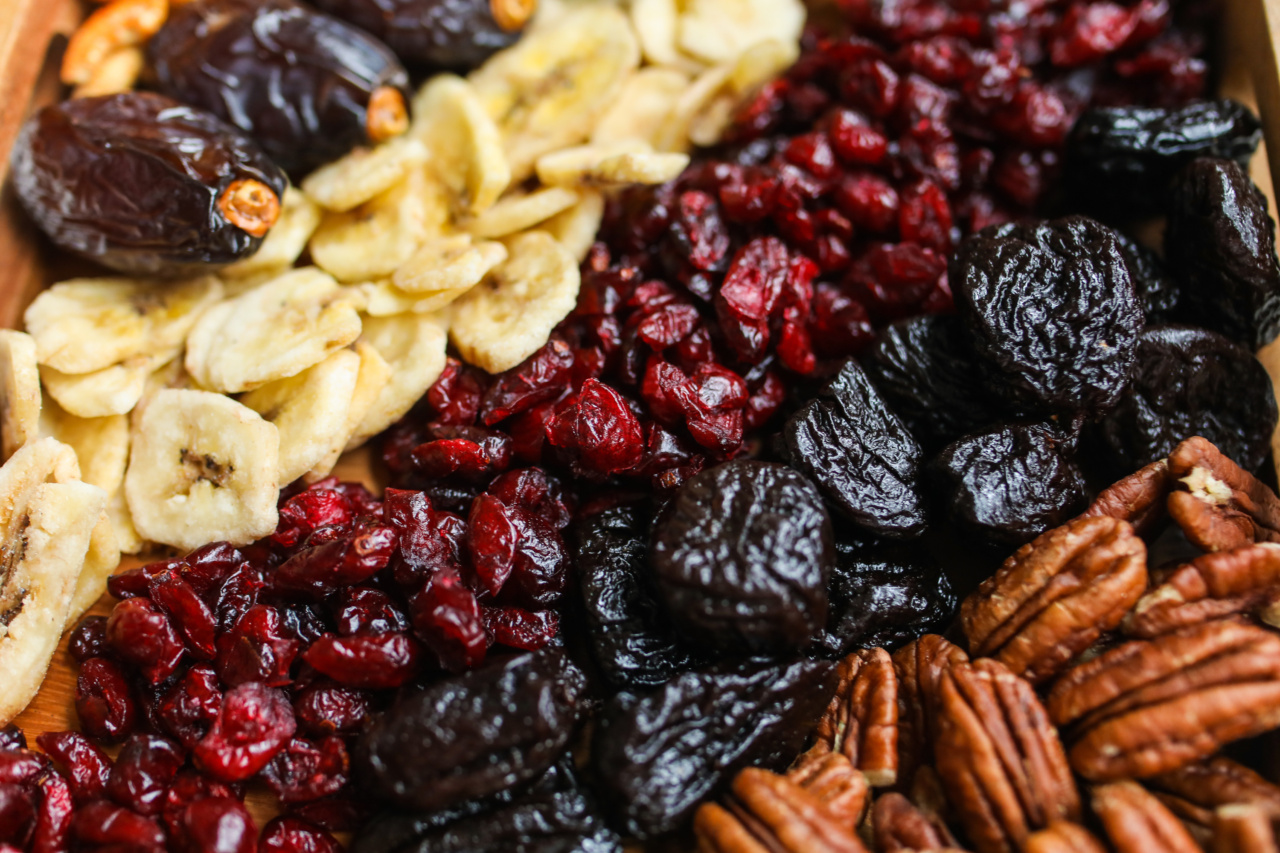High blood pressure, also known as hypertension, is a common health issue affecting millions of people worldwide.
It is often referred to as the “silent killer” because it typically has no symptoms but can lead to serious complications if left untreated. While there are various ways to manage and control blood pressure, including medication and lifestyle changes, many individuals are now turning to natural remedies, such as dried fruits, in their quest for better cardiovascular health.
In this article, we explore the potential benefits of dried fruits in controlling blood pressure and whether they can indeed be the key to maintaining healthy blood pressure levels.
The importance of managing blood pressure
Before diving into the role of dried fruits in blood pressure management, it’s essential to understand why it is crucial to maintain healthy blood pressure levels.
High blood pressure puts excessive strain on the heart, arteries, and other organs, increasing the risk of heart disease, stroke, kidney problems, and even vision loss. By managing and controlling blood pressure, individuals can significantly reduce the likelihood of developing these serious complications.
The nutritional value of dried fruits
Dried fruits are packed with essential nutrients and have long been considered a healthy snack option. They offer an array of vitamins, minerals, dietary fiber, and antioxidants that can contribute to overall well-being.
However, when it comes to blood pressure management, specific nutrients found in dried fruits come into play.
Potassium-rich dried fruits
Potassium is a crucial mineral known for its ability to help lower blood pressure. It plays a vital role in regulating fluid balance in the body and counteracting the negative effects of sodium, a mineral that can contribute to increased blood pressure.
Dried fruits such as apricots, prunes, and raisins are excellent sources of potassium.
Fiber content in dried fruits
Dietary fiber is known for its positive impact on heart health, and it can also play a role in blood pressure management. High-fiber diets have been associated with lower blood pressure levels.
Dried fruits like figs and dates are particularly rich in dietary fiber, making them a beneficial addition to a hypertension-friendly diet.
Magnesium and dried fruits
Magnesium is a mineral that helps relax blood vessels, thus promoting healthy blood flow and lowering blood pressure.
Some dried fruits, including apricots, prunes, and dates, contain significant amounts of magnesium, which can be beneficial for individuals striving to maintain optimal blood pressure levels.
Antioxidants and their impact on blood pressure
Inflammation and oxidative stress are contributing factors to high blood pressure. Antioxidants, found abundantly in many dried fruits, can help combat these harmful effects.
Antioxidants neutralize free radicals, unstable molecules that can cause damage to cells and tissues, thereby reducing inflammation and helping to keep blood pressure in check.
Portion control and potential drawbacks
While dried fruits have their fair share of health benefits, it’s important to remember that they are calorie-dense. They may also contain added sugars or preservatives that can be detrimental to blood pressure and overall health.
Therefore, portion control is essential when incorporating dried fruits into a hypertension management plan. Consulting with a healthcare professional or a registered dietitian can provide guidance on the appropriate amount of dried fruits to consume.
Incorporating dried fruits into a blood pressure-friendly diet
If you’re considering adding dried fruits to your diet to help manage blood pressure, keep in mind the following tips:.
- Choose unsweetened dried fruits to avoid excess sugar consumption.
- Opt for varieties without added preservatives or sulfites.
- Stick to recommended portion sizes, typically one-fourth to one-half cup per serving.
- Incorporate dried fruits into meals or snacks like salads, oatmeal, yogurt, or smoothies.
- Combine dried fruits with other blood pressure-friendly foods, such as nuts, seeds, and whole grains, to enhance their benefits.
The need for a balanced approach
While dried fruits can play a role in blood pressure management, it’s important to remember that they are not a magic cure.
Managing blood pressure requires a holistic approach involving lifestyle modifications, including maintaining a healthy weight, regular exercise, reducing sodium intake, limiting alcohol consumption, and quitting smoking. Dried fruits can be a valuable addition to this overall strategy but should not be relied upon as the sole solution.
Conclusion
Dried fruits offer various nutritional benefits, and their potassium, fiber, magnesium, and antioxidant content can potentially contribute to blood pressure management.
However, it’s essential to approach their consumption with caution and moderation due to their calorie density and potential additives. Combining dried fruits with a well-rounded, balanced approach to blood pressure management is key.
Consulting with a healthcare professional or a registered dietitian is always recommended to develop an individualized plan tailored to your specific health needs.





























